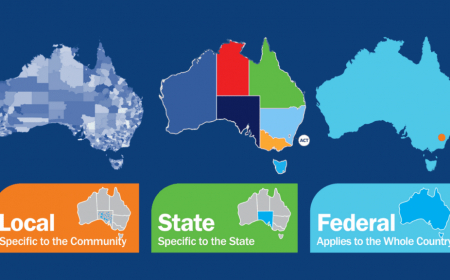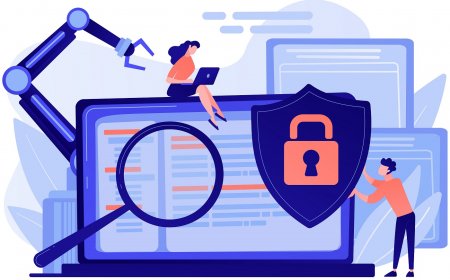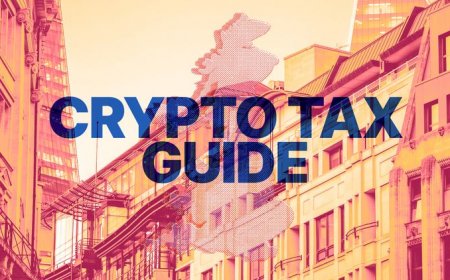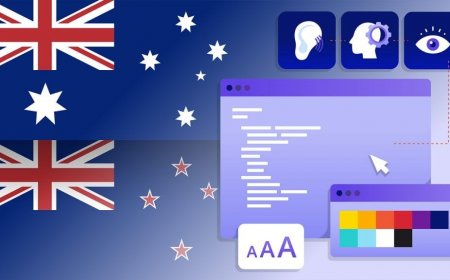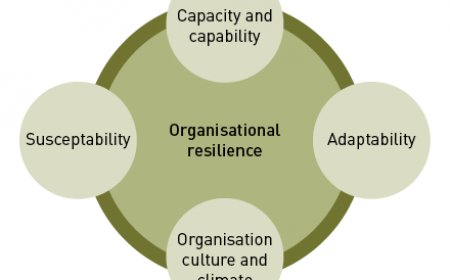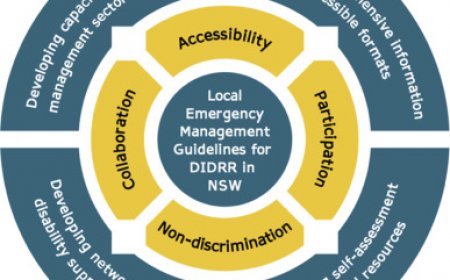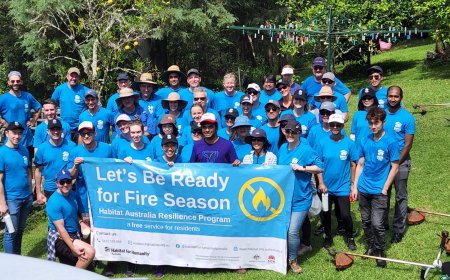Australia GovTech Innovations for 2025
Discover how Australia's GovTech innovations are revolutionizing governance through advanced technologies like AI, blockchain, and IoT, enhancing citizen services and driving societal progress by 2025.
In the rapidly evolving landscape of governance, Australia stands at the forefront of leveraging GovTech innovations to redefine public service delivery and administrative efficiency. As we approach 2025 , the Australian government is poised to implement groundbreaking technological advancements that promise to reshape how citizens interact with public institutions. These innovations are not merely incremental improvements but transformative shifts aimed at fostering transparency, inclusivity, and operational excellence.
The term GovTech , short for Government Technology, encapsulates a wide array of digital tools, platforms, and methodologies designed to enhance governmental processes. From automating routine administrative tasks to deploying sophisticated data analytics for policy formulation, GovTech innovations are set to revolutionize every facet of governance in Australia. This article delves into the multifaceted dimensions of these advancements, exploring their implications, benefits, and challenges while offering insights into how they will shape the future of public administration.
By embracing cutting-edge technologies such as artificial intelligence (AI) , blockchain , Internet of Things (IoT) , and cloud computing , Australia is not only addressing current inefficiencies but also laying the groundwork for a more resilient and adaptive governance model. The focus is on creating a seamless interface between citizens and the state, ensuring that services are accessible, responsive, and tailored to individual needs.
This comprehensive exploration begins by examining the foundational elements driving the GovTech movement in Australia. We will analyze the strategic frameworks guiding these innovations, assess their potential impact on various sectors, and highlight real-world applications that demonstrate their transformative power. Additionally, we will address the ethical considerations and cybersecurity challenges inherent in adopting new technologies, emphasizing the importance of safeguarding citizen data while promoting innovation.
As we navigate through this intricate tapestry of technological progress, it becomes evident that Australia's commitment to GovTech is not just about staying ahead in the global race for digital supremacy. It is about reimagining governance in a way that prioritizes citizen-centricity, sustainability, and long-term societal well-being. Join us as we unravel the intricacies of Australia’s GovTech journey towards 2025 and beyond.
The Strategic Framework Behind Australia’s GovTech Vision
At the core of Australia’s GovTech revolution lies a meticulously crafted strategic framework that aligns technological innovation with national priorities. This framework is underpinned by several key components, each playing a critical role in shaping the direction and implementation of GovTech initiatives across the country.
Policy Initiatives and Legislative Support
Central to the success of any large-scale technological transformation is the presence of robust policy initiatives and legislative backing. In Australia, the government has introduced a series of policies aimed at fostering an environment conducive to technological adoption. The Digital Transformation Strategy 2025 , for instance, outlines a comprehensive roadmap for integrating digital solutions into public services. This strategy emphasizes the need for interoperability, security, and scalability, ensuring that new technologies can be seamlessly integrated into existing systems without compromising performance or safety.
Legislative measures have also been enacted to support these initiatives. The Privacy Act 1988 has been updated to include provisions specifically addressing data protection in the digital age, reinforcing the government’s commitment to safeguarding citizen information. Furthermore, the introduction of the Government Digital Services Act mandates the use of standardized digital platforms, promoting consistency and efficiency across different departments and agencies.
Collaboration Between Public and Private Sectors
A pivotal aspect of Australia’s GovTech strategy is the emphasis on collaboration between the public and private sectors. Recognizing the expertise and resources available in the private sector, the government has actively sought partnerships to drive innovation. Initiatives like the GovTech Innovation Hub serve as incubators for startups and established tech companies alike, providing them with the necessary infrastructure and support to develop cutting-edge solutions tailored to governmental needs.
These collaborations extend beyond mere contractual agreements; they represent a symbiotic relationship where both parties benefit from shared knowledge and resources. For example, joint ventures between government entities and tech firms have led to the development of advanced AI-driven analytics tools that enhance decision-making processes within public administrations. Such partnerships not only accelerate the pace of innovation but also ensure that technological solutions are practical, cost-effective, and aligned with public service objectives.
Investment in Research and Development
Underpinning the entire GovTech ecosystem is a significant investment in research and development (R&D) . The Australian government has allocated substantial funding to R&D projects focused on emerging technologies relevant to governance. This includes grants for academic institutions and research organizations working on breakthroughs in areas such as quantum computing, advanced robotics, and biometric authentication.
The establishment of dedicated research centers, such as the National GovTech Research Centre , facilitates collaboration among scientists, engineers, and policymakers. These centers conduct rigorous testing and validation of new technologies before they are deployed in real-world scenarios, ensuring reliability and effectiveness. Moreover, the emphasis on continuous learning and adaptation ensures that Australia remains at the cutting edge of technological advancements, ready to adopt new innovations as they emerge.
Capacity Building and Workforce Development
To fully realize the potential of GovTech innovations, there must be a corresponding focus on capacity building and workforce development. The Australian government has launched numerous training programs aimed at equipping public servants with the skills required to operate and manage advanced technological systems. These programs cover a wide range of topics, from basic digital literacy to specialized courses in AI programming and cybersecurity.
Additionally, efforts are being made to attract top talent from around the world. By offering competitive salaries and attractive working conditions, the government aims to build a cadre of highly skilled professionals capable of driving the GovTech agenda forward. This focus on human capital is crucial, as even the most sophisticated technology requires competent operators to function effectively.
Data-Driven Decision Making
Another cornerstone of Australia’s GovTech strategy is the adoption of data-driven decision-making practices. Leveraging vast amounts of data generated by citizens and government operations, advanced analytics tools provide insights that inform policy formulation and service delivery. Predictive modeling, machine learning algorithms, and big data analytics enable policymakers to anticipate trends, identify potential issues, and devise proactive solutions.
For instance, predictive analytics have been used to forecast demand for healthcare services, allowing hospitals to allocate resources more efficiently. Similarly, traffic management systems utilize real-time data to optimize flow and reduce congestion, improving urban mobility. By harnessing the power of data, Australia is moving towards a more agile and responsive governance model that adapts quickly to changing circumstances.
Cybersecurity and Ethical Considerations
Integral to the strategic framework is a strong emphasis on cybersecurity and ethical considerations. As reliance on digital technologies increases, so does the risk of cyber threats. To mitigate these risks, the government has implemented stringent cybersecurity protocols and invested in state-of-the-art defense mechanisms. Regular audits and penetration testing ensure that systems remain secure against evolving threats.
Ethical considerations are equally important, particularly concerning the use of AI and automated decision-making systems. Guidelines have been established to ensure transparency, accountability, and fairness in algorithmic processes. Public consultations and stakeholder engagement play a vital role in shaping these guidelines, ensuring that technological advancements align with societal values and norms.
In summary, the strategic framework behind Australia’s GovTech vision is characterized by a holistic approach that integrates policy, collaboration, investment, capacity building, data utilization, and security. Each component reinforces the others, creating a cohesive ecosystem designed to propel Australia into a future where technology enhances governance in unprecedented ways.
Key Technologies Driving GovTech Advancements in Australia
As Australia strides confidently towards its GovTech 2025 vision, several key technologies are emerging as linchpins in this transformative journey. These technologies not only facilitate the modernization of governmental processes but also empower citizens through enhanced accessibility and personalized services. Below, we delve into the specifics of these pivotal innovations, highlighting their roles and impacts within the broader GovTech landscape.
Artificial Intelligence (AI) and Machine Learning
Artificial Intelligence (AI) and machine learning stand at the forefront of GovTech innovations, offering unparalleled capabilities in automation, prediction, and personalization. In Australia, AI is being harnessed to streamline administrative workflows, enhance decision-making, and deliver customized citizen services.
Automation of Administrative Processes
AI-powered bots and virtual assistants are revolutionizing the way routine administrative tasks are handled. These intelligent systems can process vast amounts of data quickly and accurately, freeing up human resources for more complex and value-added activities. For instance, chatbots integrated into government portals can handle inquiries related to tax filings, social security benefits, and visa applications, providing instant responses and reducing wait times significantly.
Predictive Analytics for Policy Formulation
Machine learning algorithms enable governments to predict future trends based on historical data, thereby informing policy decisions with greater precision. In areas such as urban planning and healthcare, predictive models help anticipate resource demands and allocate budgets accordingly. For example, predictive analytics have been instrumental in forecasting population growth patterns, enabling city planners to design infrastructure that meets anticipated needs.
Personalized Citizen Services
Through advanced analytics and AI, governments can offer hyper-personalized services tailored to individual preferences and behaviors. Personalized notifications regarding health check-ups, educational opportunities, or community events enhance user experience and foster a sense of connection between citizens and the state. Moreover, recommendation engines powered by AI suggest relevant government programs and benefits, ensuring that citizens receive maximum support.
Blockchain Technology
Blockchain technology offers a decentralized and immutable ledger system that enhances transparency, security, and trust in governmental transactions. Its applications span various domains, including identity management, voting systems, and supply chain tracking.
Secure Identity Management
Blockchain provides a robust solution for managing digital identities securely. By storing identity information on a distributed ledger, individuals retain control over their personal data while granting selective access to authorized entities. This reduces the risk of identity theft and fraud, making interactions with government agencies safer and more reliable.
Transparent Voting Systems
Elections conducted using blockchain technology ensure tamper-proof results and verifiable voter participation. Smart contracts automate vote counting and validation processes, eliminating manual errors and enhancing credibility. Pilots of blockchain-based voting systems have shown promising results, paving the way for wider adoption in upcoming elections.
Efficient Supply Chain Tracking
In sectors like agriculture and pharmaceuticals, blockchain enables end-to-end visibility of supply chains. Every transaction—from production to distribution—is recorded immutably, facilitating traceability and compliance with regulatory standards. This level of transparency builds consumer confidence and supports sustainable practices.
Internet of Things (IoT)
The Internet of Things (IoT) connects physical devices embedded with sensors and software, enabling real-time data collection and analysis. IoT applications in GovTech range from smart city initiatives to environmental monitoring and disaster response.
Smart City Initiatives
IoT devices deployed across cities gather data on traffic patterns, energy consumption, air quality, and waste management. Analyzing this data allows municipalities to optimize resource allocation, improve urban living conditions, and promote sustainability. Smart lighting systems, for example, adjust brightness based on pedestrian activity, conserving energy while maintaining safety.
Environmental Monitoring
Sensors placed in natural environments monitor parameters such as temperature, humidity, and pollution levels. This continuous stream of data aids in early detection of ecological changes, supporting conservation efforts and climate action plans. Real-time alerts triggered by abnormal readings enable swift interventions to mitigate adverse effects.
Disaster Response and Recovery
During emergencies, IoT networks facilitate rapid communication and coordination among responders. Drones equipped with cameras and sensors assess damage remotely, guiding rescue operations effectively. Additionally, wearable devices worn by emergency personnel transmit vital signs, ensuring their well-being during high-risk missions.
Cloud Computing
Cloud computing serves as the backbone of many GovTech solutions, providing scalable infrastructure and flexible storage options. It enables seamless integration of diverse systems and fosters collaboration among different stakeholders.
Scalable Infrastructure
Government agencies leverage cloud platforms to host applications and store massive volumes of data efficiently. Scalability ensures that systems can handle peak loads without degradation in performance, accommodating growing user bases and expanding service offerings.
Interoperability and Integration
Cloud-based architectures promote interoperability by standardizing interfaces and protocols. Different departments and agencies can share data effortlessly, breaking down silos and fostering cross-functional cooperation. Unified dashboards provide centralized views of operations, enhancing oversight and decision-making.
Cost Efficiency
By shifting from traditional on-premises setups to cloud environments, governments achieve significant cost savings. Pay-as-you-go pricing models eliminate upfront capital expenditures, allowing funds to be redirected towards innovation and service enhancement. Reduced maintenance overheads further contribute to financial prudence.
Biometric Authentication
Biometric authentication utilizes unique physiological characteristics such as fingerprints, facial features, and iris scans to verify identities. This technology enhances security and convenience in accessing government services.
Enhanced Security Measures
Biometric systems replace traditional passwords and PINs, which are susceptible to breaches. Multi-factor authentication combining biometrics with other credentials adds layers of protection, deterring unauthorized access attempts. Secure login mechanisms bolster public trust in digital platforms.
Streamlined Access Points
Citizens benefit from frictionless interactions when biometric authentication is employed. Self-service kiosks at airports, border checkpoints, and public offices expedite verification processes, minimizing queues and wait times. Biometric passports and ID cards simplify international travel and domestic identification procedures.
Fraud Prevention
The uniqueness of biometric traits makes them difficult to replicate or forge. Implementing biometric checks in welfare disbursement and tax refund schemes prevents fraudulent claims, safeguarding public funds and ensuring equitable distribution of resources.
Quantum Computing
Though still in nascent stages, quantum computing holds immense potential for solving complex problems beyond the reach of classical computers. Governments are investing in research to explore its applicability in cryptography, optimization, and simulation.
Advanced Cryptography
Quantum-resistant cryptographic algorithms protect sensitive information against quantum attacks. As quantum computers become more prevalent, upgrading encryption methods becomes imperative to maintain data integrity and confidentiality. Research initiatives aim to develop next-generation cryptographic standards resilient to quantum threats.
Optimization Challenges
Quantum computing excels at tackling optimization problems involving numerous variables and constraints. Applications include route optimization for logistics, portfolio management in finance, and resource allocation in healthcare. Solving these challenges efficiently translates into tangible benefits for citizens and businesses alike.
Simulation and Modeling
Simulating molecular interactions, weather patterns, and economic scenarios requires immense computational power. Quantum simulations offer deeper insights into phenomena previously too complex to model accurately. Enhanced understanding drives informed decision-making and fosters scientific breakthroughs.
In conclusion, the convergence of these key technologies forms the bedrock of Australia’s GovTech advancements. Each technology brings distinct advantages, collectively propelling the nation towards a digitally empowered future where governance is smarter, faster, and more inclusive than ever before.
Transformative Impact of GovTech Innovations Across Sectors
The ripple effect of GovTech innovations extends far beyond the confines of governmental offices, permeating various sectors and fundamentally altering how they operate. From healthcare to transportation, education to environmental management, the integration of advanced technologies is catalyzing profound transformations. This section explores the multifaceted impacts of GovTech innovations across key sectors, elucidating how these changes are reshaping industry landscapes and enhancing societal outcomes.
Healthcare: Revolutionizing Patient Care and Operational Efficiency
In the realm of healthcare , GovTech innovations are ushering in a new era of patient-centric care and operational excellence. The deployment of telemedicine platforms , powered by AI and IoT, is bridging geographical barriers, enabling remote consultations, and ensuring timely medical interventions. Patients residing in rural or underserved areas now have access to specialist care without the need for extensive travel, democratizing healthcare access nationwide.
Moreover, predictive analytics are transforming hospital management by forecasting patient admissions, optimizing staff schedules, and managing inventory levels. Hospitals equipped with IoT-enabled devices continuously monitor patients’ vitals, triggering alerts for anomalies and facilitating prompt medical attention. This proactive approach not only improves patient outcomes but also reduces operational costs by minimizing readmissions and unnecessary tests.
The implementation of electronic health records (EHRs) , secured via blockchain technology, ensures seamless sharing of medical histories among authorized practitioners. This interoperability eliminates redundant procedures, enhances diagnostic accuracy, and fosters continuity of care. Furthermore, AI-driven diagnostic tools assist clinicians in interpreting complex medical images, expediting diagnoses, and tailoring treatment plans to individual needs.
Transportation: Enhancing Mobility and Sustainability
The transportation sector is undergoing a paradigm shift thanks to GovTech innovations, particularly in the realms of smart mobility and sustainable practices . Intelligent Transportation Systems (ITS), fueled by IoT and AI, are optimizing traffic flow, reducing congestion, and enhancing road safety. Real-time data collected from connected vehicles and infrastructure informs dynamic routing algorithms, guiding drivers along less congested paths and minimizing travel times.
Public transit systems are becoming increasingly efficient and user-friendly through the integration of mobile apps and contactless payment solutions. Commuters can plan journeys, track vehicle locations, and make payments seamlessly, elevating the overall commuting experience. Autonomous vehicles, guided by sophisticated AI algorithms, are being piloted in select regions, promising safer roads and reduced human error in driving.
Sustainability remains a focal point, with electric vehicle (EV) charging networks expanding rapidly across urban and rural areas. Smart grid technologies ensure optimal energy distribution, supporting the growing fleet of EVs while mitigating strain on existing power infrastructures. Additionally, bike-sharing programs and pedestrian-friendly urban designs are encouraged through data-driven urban planning, promoting eco-friendly modes of transport.
Education: Personalizing Learning Experiences and Expanding Access
In the field of education , GovTech innovations are dismantling traditional barriers, making learning more accessible, personalized, and engaging. Online learning platforms, enriched with AI-driven content recommendations, cater to diverse learning styles and paces. Students receive tailored educational materials that adapt to their proficiency levels, ensuring mastery of concepts before progressing.
Virtual classrooms and augmented reality (AR) simulations bring abstract subjects to life, fostering deeper comprehension and retention. Remote learning opportunities, bolstered by high-speed internet connectivity, enable students from remote regions to participate in prestigious courses offered by leading institutions. This democratization of education empowers learners to acquire skills relevant to the digital economy, preparing them for future job markets.
Administratively, schools and universities leverage cloud-based systems for streamlined enrollment processes, attendance tracking, and grade reporting. Blockchain technology secures academic credentials, preventing forgery and simplifying verification processes for employers and higher education institutions. Data analytics tools provide educators with insights into student performance, enabling targeted interventions and continuous improvement of teaching methodologies.
Environmental Management: Promoting Conservation and Climate Action
Addressing pressing environmental challenges necessitates innovative solutions, and GovTech innovations are proving instrumental in advancing conservation efforts and combating climate change . IoT sensors deployed across ecosystems monitor biodiversity, water quality, and air pollution levels, generating real-time data crucial for informed decision-making. Early warning systems alert authorities to impending natural disasters, facilitating timely evacuations and emergency responses.
Urban green spaces are revitalized through smart irrigation systems that conserve water by adjusting watering schedules based on weather forecasts and soil moisture levels. Renewable energy projects, supported by AI-driven optimization tools, maximize output from solar panels and wind turbines, contributing to cleaner energy grids. Carbon footprint tracking platforms encourage businesses and households to adopt sustainable practices by visualizing their environmental impact and suggesting actionable steps for reduction.
Climate modeling software, powered by quantum computing, simulates long-term climatic trends, aiding policymakers in crafting resilient strategies. Collaborative platforms connect researchers, NGOs, and government bodies, fostering knowledge exchange and coordinated action towards shared sustainability goals. These collective efforts underscore Australia’s commitment to preserving its rich biodiversity and mitigating the adverse effects of global warming.
Social Services: Empowering Vulnerable Populations and Streamlining Welfare Delivery
Social services stand to gain immensely from GovTech innovations, particularly in empowering vulnerable populations and streamlining welfare delivery . Digital portals equipped with AI chatbots guide citizens through application processes for social assistance programs, answering queries and providing step-by-step instructions. This accessibility ensures that even those unfamiliar with digital tools can navigate the system confidently.
Biometric authentication enhances the security and efficiency of welfare disbursements, preventing fraud and ensuring funds reach intended beneficiaries promptly. Mobile banking solutions enable recipients to access financial aid conveniently, irrespective of their location. Personalized notifications remind users of upcoming deadlines and required documentation, reducing administrative burdens and increasing program uptake.
Community engagement platforms facilitate dialogue between citizens and local authorities, soliciting feedback on service delivery and policy proposals. Participatory budgeting exercises empower residents to influence spending priorities, fostering a sense of ownership and accountability. Data analytics uncover disparities in service provision, prompting targeted interventions to bridge gaps and promote equity.
Law Enforcement and Public Safety: Bolstering Security and Accountability
The law enforcement and public safety domain is witnessing significant enhancements through GovTech innovations, particularly in terms of security augmentation and accountability reinforcement . Predictive policing software analyzes crime patterns, identifying hotspots and allocating resources strategically. Officers equipped with body-worn cameras record interactions, promoting transparency and deterring misconduct.
Facial recognition systems, coupled with biometric databases, assist in identifying suspects swiftly, accelerating investigations and apprehensions. Cybersecurity measures protect sensitive law enforcement data from breaches, safeguarding national security interests. Incident reporting platforms allow citizens to submit tips anonymously, fostering community involvement in crime prevention.
Emergency response systems integrate multiple communication channels, ensuring rapid dissemination of alerts during crises. Geospatial mapping tools visualize affected areas, aiding in evacuation planning and resource deployment. Post-event analyses leverage data analytics to evaluate response effectiveness, refining protocols for future incidents.
Financial Services: Fostering Financial Inclusion and Regulatory Compliance
Within the financial services sector, GovTech innovations are driving financial inclusion and ensuring regulatory compliance . Open banking frameworks, enabled by APIs and cloud computing, facilitate secure data sharing between financial institutions and third-party providers. Consumers enjoy greater control over their financial information, accessing personalized products and services tailored to their needs.
RegTech solutions automate compliance monitoring, reducing manual workload and minimizing errors. Machine learning algorithms scan transactions for suspicious activities, flagging potential money laundering or terrorist financing attempts. Real-time reporting tools assist regulators in maintaining oversight, enforcing regulations consistently, and protecting consumers from fraudulent schemes.
Digital wallets and mobile payment platforms expand financial access, especially for unbanked populations. Microfinance initiatives leverage alternative credit scoring models, incorporating non-traditional data points to assess creditworthiness. These inclusive approaches stimulate economic growth and resilience, benefiting society at large.
Cultural Heritage Preservation: Safeguarding National Identity and Historical Narratives
Preserving cultural heritage is another area where GovTech innovations shine, safeguarding national identity and enriching historical narratives . Digitization projects convert fragile artifacts, manuscripts, and photographs into high-resolution digital formats, preserving them for posterity. Virtual museums and AR experiences immerse visitors in immersive storytelling, bringing history to life in captivating ways.
Crowdsourcing platforms invite citizens to contribute memories, oral histories, and photographs, creating comprehensive archives reflective of diverse perspectives. Blockchain technology authenticates provenance records, thwarting art forgery and illicit trade. Educational outreach programs utilize multimedia content to engage younger generations, instilling pride in cultural legacies and fostering appreciation for ancestral wisdom.
In sum, the transformative impact of GovTech innovations spans myriad sectors, each experiencing unique yet interconnected advancements. By harnessing the power of technology, Australia is not only modernizing its infrastructure but also cultivating a society that thrives on inclusivity, sustainability, and resilience. These changes herald a brighter future where technology serves as a catalyst for positive societal evolution.
Real-World Applications of GovTech Innovations in Australia
The theoretical potential of GovTech innovations finds vivid expression in numerous real-world applications across Australia. These case studies illustrate how cutting-edge technologies are being implemented to solve practical challenges, enhance service delivery, and improve citizen experiences. Below, we examine specific examples that showcase the tangible benefits and transformative power of GovTech in action.
Case Study: My Health Record System – Revolutionizing Healthcare Access
One of the most prominent examples of GovTech innovation in Australia is the My Health Record system , a national digital health record platform designed to centralize and streamline patient information. Launched in 2012 and progressively expanded since, this initiative leverages blockchain technology and cloud computing to create a secure, interoperable repository of medical data accessible to authorized healthcare providers and patients.
Implementation Details
The My Health Record system collects and stores comprehensive health information, including medications, allergies, immunizations, and clinical documents. Patients can control who accesses their records, granting permissions to general practitioners, specialists, pharmacists, and hospitals as needed. The integration of AI-driven analytics allows healthcare providers to derive actionable insights from aggregated data, improving diagnostic accuracy and treatment efficacy.
Outcomes and Benefits
Since its inception, the My Health Record system has significantly improved healthcare accessibility, particularly for individuals residing in remote areas. Emergency room doctors can instantly retrieve critical medical histories, avoiding delays in treatment and reducing the likelihood of adverse drug interactions. Chronic disease management has become more efficient, with automated reminders for medication adherence and scheduled check-ups enhancing patient compliance.
Moreover, the system has facilitated better coordination among multidisciplinary care teams. For instance, oncology units utilize shared records to synchronize chemotherapy schedules, monitor side effects, and adjust dosages dynamically. This collaborative approach not only enhances patient outcomes but also reduces redundancies in testing and consultations, resulting in substantial cost savings for both patients and healthcare providers.
Case Study: Smart Cities Initiative in Melbourne – Urban Innovation at Scale
Melbourne’s Smart Cities Initiative exemplifies how GovTech innovations can transform urban living through IoT , AI , and data analytics . This ambitious project encompasses a range of smart city applications aimed at optimizing resource utilization, enhancing public safety, and promoting sustainable development.
Implementation Details
Central to Melbourne’s Smart Cities Initiative is the deployment of an extensive network of IoT sensors embedded throughout the cityscape. These sensors monitor traffic flows, air quality, noise levels, and energy consumption in real time. Data collected is transmitted to centralized command centers where AI algorithms analyze patterns and generate actionable recommendations.
For example, adaptive traffic signals adjust timing based on current congestion levels, prioritizing emergency vehicles and public transit routes. Smart streetlights dim automatically during off-peak hours, conserving energy while maintaining adequate illumination. Environmental sensors trigger alerts when pollutant concentrations exceed safe thresholds, prompting immediate remedial actions.
Outcomes and Benefits
The Smart Cities Initiative has yielded remarkable improvements in urban functionality and livability. Traffic congestion has decreased by approximately 15%, translating into shorter commute times and reduced carbon emissions. Air quality indices show consistent improvements, attributed to stricter emission controls and greener transportation options.
Public safety has also seen notable enhancements. Surveillance cameras equipped with facial recognition software assist law enforcement in identifying persons of interest swiftly. Predictive policing models anticipate crime hotspots, enabling preemptive patrols and community engagement initiatives. Residents report heightened satisfaction with municipal services, citing responsiveness and transparency as key factors.
Furthermore, the initiative has spurred economic growth by attracting tech startups and investors keen on participating in Melbourne’s burgeoning smart city ecosystem. Collaborative ventures between government entities, academia, and private enterprises continue to drive innovation, positioning Melbourne as a global leader in urban technology.
Case Study: Digital Driver’s Licenses in New South Wales – Enhancing Convenience and Security
New South Wales (NSW) pioneered the rollout of digital driver’s licenses , replacing traditional plastic cards with secure mobile applications. This initiative represents a significant leap forward in identity management, leveraging biometric authentication and blockchain technology to ensure robust security and ease of use.
Implementation Details
The digital driver’s license app, available on smartphones, displays a scannable QR code containing encrypted personal information. Users authenticate their identity via fingerprint or facial recognition, adding an extra layer of protection against unauthorized access. Blockchain ensures tamper-proof storage of licensing details, preventing forgery and misuse.
Law enforcement officers equipped with compatible scanners can verify licenses quickly during routine stops or checkpoints. Businesses such as liquor stores and car rental agencies utilize similar scanning devices to confirm customer eligibility seamlessly. The app also includes features like renewal reminders and digital endorsements, simplifying administrative tasks for both drivers and authorities.
Outcomes and Benefits
Adoption rates for digital driver’s licenses in NSW have surpassed expectations, with over 70% of eligible residents opting for the digital version within the first year. Feedback indicates overwhelming satisfaction due to increased convenience and peace of mind regarding security.
From an operational standpoint, the transition to digital licenses has streamlined administrative processes considerably. Processing times for renewals and replacements have plummeted, freeing up resources for other priority areas. Fraudulent activities associated with counterfeit licenses have diminished sharply, bolstering public confidence in official documentation.
Additionally, the digital format aligns with broader sustainability goals by reducing plastic waste and minimizing paper usage. Future expansions may incorporate additional functionalities, such as digital proof of insurance and vehicle registration, further consolidating essential credentials into a single, secure platform.
Case Study: Queensland’s Disaster Response Network – Leveraging IoT and AI for Resilience
Queensland’s Disaster Response Network demonstrates how GovTech innovations can fortify disaster preparedness and recovery efforts. Utilizing a combination of IoT sensors , drones , and AI analytics , this network provides real-time situational awareness and facilitates coordinated responses during emergencies.
Implementation Details
Strategically placed IoT sensors monitor weather conditions, river levels, and seismic activity across Queensland. Data streams feed into a centralized dashboard powered by AI algorithms that detect anomalies and predict potential hazards. Alerts disseminate automatically to relevant stakeholders, including emergency services, local councils, and affected communities.
Drones equipped with thermal imaging cameras survey disaster zones, assessing damage extent and locating stranded individuals. Autonomous vehicles deliver supplies to inaccessible areas, ensuring timely aid reaches those in need. Communication hubs establish temporary connectivity in blackout regions, enabling continuous coordination and updates.
Outcomes and Benefits
The Disaster Response Network has proven invaluable during recent cyclones and bushfires, minimizing casualties and property losses. Rapid deployment of resources and accurate hazard mapping have expedited evacuations and containment operations. Community resilience has strengthened, with residents feeling more informed and supported during crises.
Operational efficiencies have soared, thanks to streamlined logistics and enhanced decision-making capabilities. Cross-agency collaboration has improved, breaking down silos and fostering unified strategies. Long-term recovery planning benefits from detailed post-event analyses, informing infrastructure upgrades and policy revisions aimed at mitigating future risks.
Case Study: Victoria’s Education Cloud – Transforming Learning Environments
Victoria’s Education Cloud initiative exemplifies how GovTech innovations can revolutionize educational landscapes by providing scalable, flexible, and secure IT infrastructure. Designed to support over 1,500 schools and hundreds of thousands of students, this cloud-based platform integrates AI , data analytics , and virtual learning environments to deliver personalized, high-quality education.
Implementation Details
The Education Cloud hosts a suite of digital tools and resources, including learning management systems, assessment platforms, and communication channels. Teachers upload lesson plans, assignments, and multimedia content, accessible anytime, anywhere. Students engage in interactive modules, participate in virtual classrooms, and collaborate on group projects seamlessly.
AI-driven analytics track student progress, identifying strengths and weaknesses in real time. Customized feedback guides instructional adjustments, ensuring no learner falls behind. Parent portals offer transparent views of academic performance, attendance records, and behavioral insights, fostering stronger home-school partnerships.
Outcomes and Benefits
Student achievement metrics have shown marked improvements since the Education Cloud’s launch. Dropout rates have declined, attributed to early intervention strategies informed by data analytics. Teacher workloads have eased, allowing more focus on pedagogical innovation and individualized support.
Equity in education has advanced, with disadvantaged students gaining equal access to quality resources and expert guidance. Rural schools, once constrained by limited facilities and staffing, now thrive alongside urban counterparts. Professional development opportunities for educators have expanded, keeping teaching practices abreast of technological advancements.
Longitudinal studies indicate sustained positive impacts on graduation rates, college enrollments, and workforce readiness. The Education Cloud continues to evolve, incorporating emerging technologies and best practices to maintain its leadership position in digital education.
Conclusion: Demonstrating Tangible Value Through GovTech Innovations
These case studies underscore the profound impact of GovTech innovations on various facets of Australian society. Whether enhancing healthcare access, optimizing urban living, securing identity management, fortifying disaster resilience, or transforming education, these real-world applications exemplify the versatility and potency of technology in addressing complex challenges.
By showcasing concrete successes and measurable outcomes, Australia sets a benchmark for other nations aspiring to embrace GovTech. The lessons learned and best practices developed here pave the way for continued innovation, ensuring that technology remains a force multiplier for good governance and societal advancement.
Challenges and Limitations in Implementing GovTech Innovations
Despite the promising prospects of GovTech innovations , their implementation is fraught with challenges and limitations that require careful navigation. Understanding these hurdles is crucial for devising effective strategies to overcome them and ensure the successful integration of technology into governance structures. Below, we dissect the primary obstacles faced by Australia in its quest to fully realize the potential of GovTech.
Cybersecurity Threats and Data Privacy Concerns
One of the most pressing challenges in implementing GovTech innovations is the ever-present threat of cybersecurity breaches and the associated concerns over data privacy . As government systems become increasingly digitized, they also become more attractive targets for malicious actors seeking to exploit vulnerabilities.
Sophisticated Cyber Attacks
Advanced persistent threats (APTs), ransomware, and phishing attacks pose significant risks to GovTech platforms. These attacks aim to infiltrate networks, steal sensitive information, disrupt services, and extort money. For instance, a successful breach could compromise national security, expose confidential citizen data, and erode public trust in digital governance.
Mitigating these threats necessitates robust cybersecurity protocols , regular vulnerability assessments, and continuous monitoring. However, the rapidly evolving nature of cyber threats means that defenses must constantly adapt, requiring substantial investment in cutting-edge technologies and skilled personnel. Even then, no system is entirely impervious, leaving a perpetual risk of breaches despite best efforts.
Balancing Transparency with Privacy
While transparency is a cornerstone of good governance, it often conflicts with the imperative to protect individual privacy. Citizens expect their personal information to be handled responsibly, yet the openness demanded by democratic principles sometimes clashes with stringent data protection requirements.
Implementing privacy-by-design principles helps address these tensions by embedding privacy safeguards into the architecture of digital systems from the outset. Techniques such as differential privacy, homomorphic encryption, and zero-knowledge proofs offer ways to analyze data without exposing raw information. Nevertheless, striking the right balance remains challenging, especially given varying interpretations of what constitutes acceptable levels of transparency versus privacy intrusion.
Technological Infrastructure and Legacy Systems
Another significant barrier to GovTech adoption is the state of existing technological infrastructure and the prevalence of outdated legacy systems . Many government agencies operate on aging hardware and software that lack compatibility with modern solutions, hindering seamless integration.
Fragmented IT Landscapes
Government IT landscapes are often fragmented, comprising disparate systems developed independently by different departments. This fragmentation results in data silos, inconsistent standards, and inefficient workflows. Harmonizing these systems requires extensive re-engineering, standardization, and interconnectivity—tasks that are technically complex and financially demanding.
Upgrading legacy systems involves not only replacing obsolete components but also migrating vast amounts of data securely and accurately. Ensuring minimal disruption during transitions is paramount, as downtime can severely affect service delivery and public confidence. Additionally, resistance to change from entrenched stakeholders accustomed to old ways of working adds another layer of complexity.
Scalability and Interoperability Issues
Even when new technologies are introduced, achieving scalability and interoperability across diverse platforms presents ongoing challenges. GovTech solutions must accommodate fluctuating user demands, scale horizontally or vertically as needed, and communicate effectively with external systems. Achieving this level of flexibility typically requires sophisticated middleware, API gateways, and microservices architectures, all of which add to the technical debt and maintenance burden.
Interoperability standards vary widely, complicating efforts to establish universal protocols. Without clear guidelines, developers face difficulties ensuring that newly developed applications integrate smoothly with existing ones. Standardization initiatives, though helpful, take time to mature and gain widespread adoption, delaying progress in the interim.
Budget Constraints and Resource Allocation
Funding constraints represent another formidable obstacle to widespread GovTech implementation. Developing, deploying, and maintaining advanced technological solutions demand considerable financial resources, which may compete with other pressing priorities within constrained government budgets.
Initial Investment Costs
The upfront costs associated with acquiring new technologies, training staff, and restructuring organizational processes can be prohibitive. Procurement cycles for large-scale IT projects often span years, exacerbating delays and increasing expenses. Budgetary approvals hinge on demonstrating clear return on investment (ROI), which can be difficult to quantify in the context of intangible benefits like improved citizen satisfaction or enhanced transparency.
Moreover, the iterative nature of technological development means that initial deployments rarely meet all desired specifications. Continuous refinement and scaling necessitate ongoing expenditure, straining already tight fiscal allocations. Securing sustained funding commitments becomes critical yet challenging, particularly amidst competing claims on limited resources.
Human Capital Shortages
Beyond monetary considerations, shortages in qualified human capital further complicate GovTech rollouts. Skilled professionals proficient in emerging fields such as AI, blockchain, and quantum computing are in high demand globally, making recruitment and retention difficult for government entities operating under bureaucratic constraints.
Training existing employees to acquire necessary competencies takes time and effort, diverting attention from core responsibilities. Attracting top talent from the private sector often proves elusive due to perceived lower salaries, slower career progression, and less dynamic work environments compared to corporate settings. Bridging this skills gap requires innovative approaches to workforce development, including partnerships with educational institutions, apprenticeship programs, and flexible hiring practices.
Legal and Regulatory Hurdles
Navigating the labyrinth of legal and regulatory frameworks governing technology use in the public sector introduces additional layers of complexity. Compliance with laws related to data protection, intellectual property, procurement, and liability poses significant challenges for GovTech innovators.
Compliance Burdens
Ensuring compliance with myriad regulations consumes valuable time and resources. For example, adhering to the General Data Protection Regulation (GDPR) equivalent in Australia entails meticulous documentation, audit trails, and consent management processes. Failure to comply exposes agencies to legal penalties, reputational damage, and loss of public trust.
Regulatory uncertainty compounds these challenges, as laws frequently lag behind technological advancements. Ambiguities surrounding emerging technologies like AI and blockchain leave implementers grappling with gray areas, unsure whether proposed solutions align with current legal interpretations. Engaging legal experts early in project lifecycles helps mitigate risks but adds to overall project timelines and costs.
Procurement Complexities
Traditional procurement processes designed for conventional goods and services struggle to accommodate the nuances of procuring cutting-edge technologies. Lengthy tendering procedures, rigid specifications, and preference for lowest-cost bids often stifle innovation and discourage participation from agile startups offering disruptive solutions.
Reforming procurement policies to embrace outcome-based contracting, modular architectures, and open-source contributions can alleviate some of these issues. However, institutional inertia and vested interests resistant to change slow down reform efforts, perpetuating inefficiencies and missed opportunities.
Public Acceptance and Digital Divide
A critical yet often overlooked challenge in implementing GovTech innovations is ensuring public acceptance and addressing the persistent digital divide . While technology holds immense potential to enhance governance, its success hinges on widespread adoption by citizens who must trust and feel comfortable using these digital tools.
Building Public Trust
Trust is foundational to any successful GovTech initiative. Citizens need assurance that their data is secure, that algorithms are transparent, and that decisions made through automated systems are fair and unbiased. However, mistrust can arise from past experiences with data breaches, opaque decision-making processes, or perceived overreach by government entities.
To build trust, governments must prioritize transparency and accountability . This includes clearly communicating how technologies like AI and blockchain are being used, what data is collected, and how it will be protected. Regular audits, independent oversight bodies, and public consultations can further reinforce confidence in these systems. Additionally, demonstrating tangible benefits—such as faster service delivery or reduced administrative burdens—can help shift public perception positively.
Despite these efforts, resistance may still emerge from segments of the population skeptical of technological interventions in governance. Addressing this skepticism requires sustained engagement, education campaigns, and opportunities for citizens to voice concerns and provide feedback throughout the implementation process.
Bridging the Digital Divide
The digital divide refers to disparities in access to technology, internet connectivity, and digital literacy skills among different demographic groups. In Australia, rural and remote communities, low-income households, elderly individuals, and Indigenous populations are disproportionately affected by this divide, limiting their ability to fully participate in and benefit from GovTech initiatives.
Infrastructure Gaps
In many regional areas, inadequate broadband infrastructure remains a significant barrier to accessing online services. High-speed internet is essential for utilizing cloud-based platforms, video conferencing tools, and real-time data analytics—all integral components of modern GovTech solutions. Without reliable connectivity, residents in underserved regions risk being excluded from critical services such as telehealth, e-learning, and digital welfare disbursements.
Efforts to expand broadband coverage, such as the National Broadband Network (NBN), have made strides but gaps persist. Satellite and wireless technologies offer alternative solutions for hard-to-reach locations, though they often come with higher costs and lower reliability compared to fiber-optic connections. Bridging these infrastructure gaps demands continued investment and innovative approaches tailored to local needs.
Digital Literacy Challenges
Even where infrastructure exists, lack of digital literacy can prevent effective utilization of GovTech tools. Many citizens, particularly older adults and those with limited formal education, struggle to navigate complex digital interfaces or understand the implications of sharing personal information online. This creates frustration and reluctance to engage with digital platforms, undermining the intended benefits of GovTech innovations.
Addressing digital literacy requires targeted training programs delivered through schools, community centers, libraries, and mobile units. These programs should focus not only on basic computer skills but also on fostering critical thinking around cybersecurity, privacy settings, and ethical considerations related to technology use. Partnerships with NGOs, private sector players, and grassroots organizations can amplify outreach efforts and ensure inclusivity.
Affordability Concerns
Cost remains another factor contributing to the digital divide. Devices such as smartphones, tablets, and laptops necessary for accessing digital services can be prohibitively expensive for low-income families. Similarly, subscription fees for high-speed internet plans pose financial burdens that deter consistent usage.
Subsidized device programs, affordable data plans, and free Wi-Fi hotspots in public spaces can alleviate some of these affordability issues. Governments might also explore partnerships with tech companies to offer discounted or refurbished equipment specifically designed for vulnerable populations. Ensuring affordability aligns with broader social equity goals, enabling all citizens to partake in the digital transformation of governance.
Cultural and Behavioral Resistance
Beyond technical and infrastructural barriers, cultural attitudes and behavioral resistance present additional hurdles to GovTech adoption. Change management strategies are essential to overcoming entrenched habits and fostering a culture receptive to innovation.
Overcoming Status Quo Bias
Government employees accustomed to traditional workflows may resist adopting new technologies due to fear of job displacement, increased workload during transition periods, or simply discomfort with unfamiliar systems. This status quo bias can slow down implementation timelines and reduce overall effectiveness.
Effective change management involves engaging staff early in the planning stages, providing comprehensive training, and highlighting the long-term benefits of automation and digitization. Recognizing and rewarding adaptability, offering career development pathways aligned with emerging roles, and creating supportive environments for experimentation can ease the transition.
Engaging Diverse Stakeholders
Successful GovTech projects depend on collaboration across multiple stakeholders, including policymakers, technologists, civil society groups, and end-users. Misalignment among these parties can lead to conflicting priorities, delayed approvals, and suboptimal outcomes.
Establishing clear communication channels, setting shared objectives, and involving stakeholders throughout the design and deployment phases fosters alignment and buy-in. Co-creation workshops, pilot testing with user feedback loops, and iterative refinements based on real-world insights enhance solution relevance and usability. By valuing diverse perspectives, governments can craft inclusive GovTech strategies that resonate with varied constituencies.
Ethical Considerations and Algorithmic Bias
As AI and machine learning become more prevalent in GovTech applications, ethical considerations surrounding algorithmic bias , fairness, and accountability grow increasingly important. Biased algorithms can perpetuate existing inequalities, leading to discriminatory outcomes in areas such as hiring, law enforcement, and resource allocation.
Identifying and Mitigating Bias
Algorithmic bias occurs when datasets used to train AI models reflect historical prejudices or lack diversity, resulting in skewed predictions and recommendations. For example, facial recognition systems have been shown to perform poorly for people of color if trained predominantly on white faces.
Mitigating bias requires rigorous testing, validation, and auditing of AI systems before deployment. Diverse and representative datasets, transparent model architectures, and explainable AI techniques enable stakeholders to understand and address sources of bias. Establishing ethical guidelines and oversight committees ensures adherence to principles of fairness, non-discrimination, and respect for human rights.
Ensuring Accountability
Determining accountability for decisions made by autonomous systems poses unique challenges. When an AI-driven tool recommends denying a loan application or flagging someone as a security threat, identifying responsible parties becomes complicated. Clear lines of responsibility, documented decision logs, and mechanisms for redress are vital to maintaining public confidence.
Regulatory frameworks governing AI ethics and liability are still evolving, necessitating proactive engagement from policymakers and industry leaders. Collaborative efforts to define best practices, establish certification standards, and promote transparency contribute to building trustworthy AI ecosystems within GovTech contexts.
Conclusion: Navigating Complex Terrain
The journey towards realizing the full potential of GovTech innovations in Australia is rife with challenges spanning cybersecurity threats, legacy system limitations, budget constraints, legal complexities, public acceptance hurdles, and ethical dilemmas. Each obstacle presents unique demands requiring tailored responses grounded in strategic foresight, stakeholder collaboration, and adaptive leadership.
By acknowledging and actively addressing these challenges, governments can pave the way for transformative advancements that enhance citizen-centric governance, foster economic growth, and uphold democratic values. The path forward is neither straightforward nor devoid of setbacks, but with persistence, innovation, and commitment to inclusivity, Australia stands poised to lead the global charge in harnessing technology for the greater good.
Accessibility
Ensuring accessibility in GovTech innovations is paramount to achieving equitable service delivery and fostering an inclusive digital ecosystem. Accessibility encompasses designing technologies and platforms that cater to individuals with diverse abilities, ensuring no one is left behind in the digital transformation of governance. Below, we explore key aspects of accessibility within the context of Australia’s GovTech initiatives.
Designing for Universal Access
Universal design principles emphasize creating products and environments usable by all people, regardless of age, ability, or status. Applying these principles to GovTech ensures that digital services are accessible to everyone, including those with visual, auditory, motor, cognitive, and neurological disabilities.
Web Content Accessibility Guidelines (WCAG)
Adhering to internationally recognized standards such as the Web Content Accessibility Guidelines (WCAG) is fundamental to developing accessible digital platforms. WCAG provides specific criteria for making web content perceivable, operable, understandable, and robust. Key features include text alternatives for non-text content, sufficient color contrast, keyboard navigability, and compatibility with assistive technologies like screen readers.
Implementing WCAG compliance involves rigorous testing and validation across various devices and browsers. Automated tools combined with manual evaluations help identify and rectify accessibility barriers, ensuring consistent user experiences. Regular updates and audits maintain adherence as technologies evolve.
Assistive Technologies Integration
Integrating assistive technologies into GovTech platforms enhances usability for individuals relying on specialized tools. Examples include speech recognition software, braille displays, magnification applications, and alternative input devices. Seamless integration requires designing flexible interfaces that accommodate different interaction modes and preferences.
For instance, voice-activated assistants enable hands-free navigation for users with mobility impairments, while customizable font sizes and layouts support those with visual difficulties. Providing options for adjusting display settings empowers users to tailor their experience according to individual needs.
Addressing Cognitive and Sensory Disabilities
Individuals with cognitive and sensory disabilities face distinct challenges when interacting with digital systems. Tailoring GovTech solutions to accommodate these needs promotes greater inclusivity and participation.
Simplifying User Interfaces
Complex user interfaces can overwhelm users with cognitive impairments, hindering their ability to complete tasks efficiently. Simplifying designs through intuitive navigation paths, concise instructions, and minimalistic aesthetics reduces cognitive load and enhances usability.
Features such as step-by-step wizards, contextual help menus, and error prevention mechanisms guide users through processes smoothly. Consistent labeling, predictable behaviors, and logical sequencing further aid comprehension and task completion.
Multimodal Communication Channels
Offering multimodal communication channels caters to users with sensory disabilities. For visually impaired individuals, audio descriptions, text-to-speech functionality, and tactile feedback enhance information accessibility. Similarly, sign language interpretation, captioned videos, and transcripts support deaf and hard-of-hearing users.
Providing multiple ways to consume and interact with content ensures that everyone can access information effectively. Cross-platform compatibility extends accessibility beyond desktops to mobile devices, smart TVs, and wearable gadgets, accommodating varying user contexts and preferences.
Promoting Digital Literacy and Training
Empowering citizens with digital literacy skills is crucial for maximizing the benefits of accessible GovTech innovations. Education and training initiatives equip users with the knowledge and confidence to navigate digital platforms independently.
Community-Based Programs
Community-based programs targeting underrepresented groups deliver practical, hands-on training in safe and supportive environments. Workshops cover topics ranging from basic computer operations to advanced digital citizenship concepts, emphasizing accessibility features and troubleshooting tips.
Partnerships with local organizations, schools, and libraries extend program reach and sustainability. Peer mentoring and volunteer-led sessions foster peer-to-peer learning and community cohesion, reinforcing positive attitudes towards technology adoption.
Accessible Learning Resources
Developing accessible learning resources ensures that educational materials themselves do not pose barriers to understanding. Incorporating universal design elements, such as readable fonts, descriptive images, and interactive simulations, accommodates diverse learning styles and abilities.
Online courses and tutorials should incorporate closed captions, transcripts, and adjustable playback speeds to facilitate comprehension. Gamified modules and scenario-based exercises engage learners actively, promoting retention and skill application.
Monitoring and Evaluating Accessibility Outcomes
Continuous monitoring and evaluation of accessibility outcomes inform ongoing improvements and demonstrate commitment to inclusivity. Metrics tracking usage patterns, satisfaction levels, and incident reports highlight areas requiring attention and validate the impact of accessibility enhancements.
User Feedback Mechanisms
Establishing robust user feedback mechanisms solicits direct input from citizens regarding accessibility experiences. Surveys, focus groups, and suggestion boxes gather qualitative insights into pain points and suggestions for improvement. Analyzing feedback trends identifies common issues and prioritizes resolution efforts accordingly.
Responsive customer support channels address immediate concerns promptly, building trust and rapport with users. Transparent communication about corrective actions taken reinforces accountability and demonstrates responsiveness to user needs.
Performance Indicators and Benchmarks
Defining clear performance indicators and benchmarks measures progress towards accessibility goals quantitatively. Key metrics might include website traffic from assistive devices, time spent completing tasks, error rates, and conversion rates for key actions. Comparing results against industry standards and best practices informs strategic adjustments and resource allocations.
Regular reporting and benchmarking activities communicate achievements internally and externally, celebrating successes and motivating continuous enhancement. Sharing findings with stakeholders fosters collaborative problem-solving and shared ownership of accessibility objectives.
Conclusion: Prioritizing Accessibility for All
Prioritizing accessibility in GovTech innovations reflects a steadfast dedication to equality, dignity, and empowerment for every citizen. By embedding universal design principles, leveraging assistive technologies, addressing cognitive and sensory needs, promoting digital literacy, and rigorously evaluating outcomes, Australia sets a precedent for inclusive digital governance globally.
Through concerted efforts and unwavering resolve, accessibility ceases to be an afterthought and becomes an intrinsic component of technological advancement. As Australia strides confidently towards 2025, its commitment to accessibility ensures that GovTech serves as a beacon of hope, opportunity, and justice for all members of society.
How To Implement GovTech Innovations Effectively
Implementing GovTech innovations effectively requires a structured approach that addresses technical, organizational, and societal dimensions simultaneously. Below, we outline a comprehensive roadmap detailing actionable steps and best practices to ensure successful deployment and sustained impact of GovTech initiatives in Australia.
Step 1: Conduct Comprehensive Needs Assessment
Before embarking on any GovTech project, conducting a thorough needs assessment is imperative. This initial phase involves gathering insights from various stakeholders—including government officials, citizens, industry experts, and academia—to identify pressing challenges, desired outcomes, and feasible technological solutions.
Engage Stakeholders Early
Involve key stakeholders from the outset to gain diverse perspectives and foster buy-in. Host workshops, town hall meetings, and focus groups to solicit feedback on current pain points and expectations for future improvements. Documenting these inputs forms the basis for defining project scope and objectives.
Analyze Existing Systems
Evaluate existing IT infrastructure, business processes, and service delivery models to pinpoint inefficiencies and redundancies. Mapping out dependencies and interconnections reveals potential bottlenecks and informs integration strategies. Tools like SWOT analysis (Strengths, Weaknesses, Opportunities, Threats) aid in assessing readiness for technological upgrades.
Step 2: Develop a Clear Strategic Plan
With a solid understanding of needs and capabilities, formulate a detailed strategic plan outlining vision, mission, goals, and milestones. A well-articulated strategy aligns technological investments with broader policy objectives and allocates resources judiciously.
Set SMART Goals
Define Specific, Measurable, Achievable, Relevant, and Time-bound (SMART) goals to guide implementation efforts. For example, aim to reduce processing times for passport applications by 30% within six months using automated workflows. Quantifiable targets facilitate progress tracking and performance evaluation.
Establish Governance Structures
Create dedicated governance bodies comprising cross-functional teams responsible for overseeing project execution, risk management, and quality assurance. Assign roles and responsibilities clearly, ensuring accountability at every level. Regular check-ins and status updates keep stakeholders informed and engaged.
Step 3: Select Appropriate Technologies
Choosing the right mix of technologies is crucial for achieving desired outcomes. Evaluate available options based on functionality, scalability, interoperability, security, and cost-effectiveness. Pilot testing helps validate assumptions and refine selections before full-scale rollout.
Leverage Open Standards and APIs
Opt for solutions built on open standards and Application Programming Interfaces (APIs) to promote flexibility and extensibility. Modular architectures allow incremental upgrades and seamless integration with third-party applications. Avoid vendor lock-in by favoring platforms that support multi-cloud deployments and hybrid configurations.
Embrace Emerging Trends
Stay abreast of emerging trends and breakthroughs in fields like AI, IoT, blockchain, and quantum computing. Experimentation with prototypes and proof-of-concept projects gauges feasibility and uncovers novel use cases. Encourage innovation labs and hackathons to stimulate creativity and attract fresh ideas.
Step 4: Design User-Centric Solutions
User experience (UX) should remain at the forefront of design considerations. Crafting user-centric solutions entails empathizing with end-users, prototyping iteratively, and validating designs through usability testing.
Map User Journeys
Visualize typical user journeys to understand touchpoints, pain points, and moments of delight. Personas representing different user segments guide design decisions, ensuring inclusivity and relevance. Journey maps highlight opportunities for simplification, personalization, and automation.
Iterate Based on Feedback
Prototypes undergo multiple rounds of iteration based on user feedback gathered through surveys, interviews, and observation sessions. Rapid prototyping tools accelerate development cycles, enabling quick pivots and refinements. Continuous improvement loops sustain momentum and drive excellence.
Step 5: Ensure Robust Security and Privacy Protections
Security and privacy cannot be compromised in GovTech implementations. Embedding robust protections throughout the lifecycle safeguards sensitive data and maintains public trust.
Implement Zero Trust Architecture
Adopt zero trust principles mandating strict verification for every access request, irrespective of origin. Multi-factor authentication, encryption, and least privilege policies fortify defenses against unauthorized intrusions. Regular penetration tests and vulnerability scans uncover weaknesses proactively.
Enforce Data Minimization Practices
Collect only the minimum amount of data necessary for fulfilling specific purposes. Anonymize and pseudonymize datasets wherever possible to minimize re-identification risks. Data retention policies specify disposal schedules, preventing unnecessary accumulation.
Step 6: Build Capacity Through Training and Development
Equipping staff with requisite skills and knowledge enables smooth transitions and maximizes return on investment. Comprehensive training programs cover technical competencies, change management techniques, and soft skills development.
Customize Learning Paths
Tailor training curricula to match individual roles and responsibilities. Technical personnel receive specialized instruction on coding languages, DevOps practices, and cybersecurity protocols. Frontline workers learn customer service essentials, empathy-building exercises, and conflict resolution strategies.
Foster Continuous Learning Culture
Encourage lifelong learning through mentorship programs, knowledge-sharing platforms, and professional certifications. Internal wikis, discussion forums, and lunch-and-learn sessions cultivate a culture of curiosity and collaboration. Celebrating achievements publicly motivates others to pursue growth opportunities.
Step 7: Monitor Progress and Adapt Accordingly
Ongoing monitoring and adaptation ensure that GovTech initiatives remain aligned with evolving requirements and emerging challenges. Establishing key performance indicators (KPIs) and feedback loops facilitates timely interventions and course corrections.
Track KPIs Rigorously
Measure KPIs regularly against predefined benchmarks to assess progress objectively. Dashboards displaying real-time analytics visualize trends, anomalies, and correlations. Root cause analyses investigate deviations and propose corrective measures systematically.
Solicit Ongoing Feedback
Maintain open lines of communication with end-users and stakeholders post-launch. Periodic surveys, Net Promoter Scores (NPS), and sentiment analyses gauge satisfaction levels and detect latent issues. Acting on feedback swiftly demonstrates responsiveness and builds loyalty.
Step 8: Scale Successfully and Sustain Momentum
Scaling GovTech innovations beyond pilot phases requires careful planning and execution. Strategies for successful scaling encompass standardization, replication, and ecosystem expansion.
Standardize Processes
Document standardized procedures, templates, and guidelines to streamline replication across departments and jurisdictions. Central repositories store reusable assets, reducing duplication and enhancing consistency. Version control ensures updates propagate uniformly.
Expand Ecosystem Partnerships
Forge partnerships with academia, startups, NGOs, and international bodies to enrich the GovTech ecosystem. Joint ventures, research collaborations, and co-innovation hubs generate synergies and unlock new possibilities. Shared value propositions incentivize active participation and mutual benefit.
Conclusion: Mastering the Art of Implementation
Effectively implementing GovTech innovations demands meticulous planning, relentless execution, and adaptive leadership. By following the outlined steps—conducting needs assessments, developing strategic plans, selecting appropriate technologies, designing user-centric solutions, ensuring security, building capacity, monitoring progress, and scaling successfully—Australia positions itself as a trailblazer in leveraging technology for transformative governance.
This holistic approach not only addresses immediate operational challenges but also lays the groundwork for sustainable advancements that uplift society holistically. As Australia marches towards 2025, mastering the art of implementation becomes synonymous with realizing the boundless potential of GovTech innovations.
Conclusion: Charting the Future of Governance Through Technology
As we reflect on the expansive journey of Australia's GovTech innovations , it becomes evident that the nation is charting a bold course towards a future where technology seamlessly integrates with governance to serve the collective good. The strides made thus far underscore a profound commitment to leveraging cutting-edge advancements not merely for efficiency gains but as catalysts for societal transformation. From healthcare and education to urban planning and disaster response, the ripple effects of GovTech are reshaping the fabric of daily life, fostering inclusivity, transparency, and resilience.
The cornerstone of this transformation lies in the strategic orchestration of policy frameworks , technological adoption , and stakeholder collaboration . By embedding innovation deeply within governmental DNA, Australia has laid a foundation capable of adapting to rapid technological shifts while remaining steadfast in its pursuit of citizen-centric outcomes. Real-world applications—from digital health records and smart cities to disaster networks and virtual classrooms—exemplify how theoretical potential translates into tangible benefits, enhancing both service delivery and quality of life.
However, the road ahead is not without its challenges. Cybersecurity threats , legacy system limitations , budgetary constraints , and the pervasive digital divide remind us that progress is iterative and demands vigilance. Addressing these hurdles necessitates a balanced approach that marries technological prowess with ethical considerations, ensuring that advancements do not inadvertently exacerbate existing inequalities or compromise fundamental rights.
Moreover, the emphasis on accessibility and user-centric design reaffirms the principle that technology should empower rather than exclude. By prioritizing universal access and digital literacy, Australia underscores its dedication to leaving no one behind in the march towards digital governance. This ethos of inclusivity is further reinforced through robust feedback mechanisms and performance evaluations , which continuously refine and recalibrate initiatives to better meet evolving needs.
Looking forward, the trajectory set by Australia's GovTech endeavors offers valuable lessons for other nations aspiring to embark on similar journeys. The integration of emerging technologies such as AI, blockchain, IoT, and quantum computing heralds unprecedented opportunities for innovation. Yet, the true measure of success will lie not in the sophistication of tools deployed but in their ability to enhance human dignity, promote social equity, and safeguard democratic values.
In conclusion, Australia's GovTech narrative is one of aspiration tempered by pragmatism, ambition guided by ethics, and innovation anchored in purpose. As the nation strides confidently towards 2025, it does so with a clear vision: to harness the power of technology in crafting a governance model that is smarter, faster, and more responsive than ever before. This vision promises not only to redefine what is possible within the realm of public administration but also to inspire a global reimagining of how technology can elevate humanity collectively.
10 Frequently Asked Questions (FAQs)
-
What is GovTech?
- GovTech refers to the use of technology to improve government operations, enhance citizen services, and foster transparency and efficiency in public administration.
-
Why is GovTech important for Australia?
- GovTech is crucial for Australia as it enables the government to modernize services, increase accessibility, and respond effectively to societal challenges through innovative technological solutions.
-
How does AI contribute to GovTech innovations?
- AI automates administrative tasks, provides predictive analytics for decision-making, and personalizes citizen services, significantly boosting operational efficiency and user experience.
-
What role does blockchain play in GovTech?
- Blockchain ensures secure and transparent transactions, manages digital identities, and supports tamper-proof voting systems, enhancing trust and integrity in governmental processes.
-
Can IoT improve urban living in Australia?
- Yes, IoT optimizes traffic flow, monitors environmental conditions, and enhances public safety, contributing to smarter, more sustainable cities.
-
How does cloud computing benefit GovTech initiatives?
- Cloud computing offers scalable infrastructure, facilitates data sharing, and reduces costs, enabling seamless integration and operation of diverse GovTech applications.
-
What are the main cybersecurity concerns in GovTech?
- Cybersecurity concerns include protecting sensitive data from breaches, ensuring secure authentication methods, and defending against sophisticated cyber threats targeting critical infrastructure.
-
How can the digital divide be addressed in GovTech projects?
- Addressing the digital divide involves expanding broadband access, providing affordable devices, and offering digital literacy programs to ensure equitable participation in digital governance.
-
What ethical considerations arise with AI in GovTech?
- Ethical considerations include mitigating algorithmic bias, ensuring transparency in automated decision-making, and establishing accountability frameworks for AI-driven outcomes.
-
How can citizens provide feedback on GovTech initiatives?
- Citizens can offer feedback through surveys, public consultations, suggestion boxes, and interactive platforms, helping governments refine and improve digital services continuously.
What's Your Reaction?
 Like
0
Like
0
 Dislike
0
Dislike
0
 Love
0
Love
0
 Funny
0
Funny
0
 Angry
0
Angry
0
 Sad
0
Sad
0
 Wow
0
Wow
0



